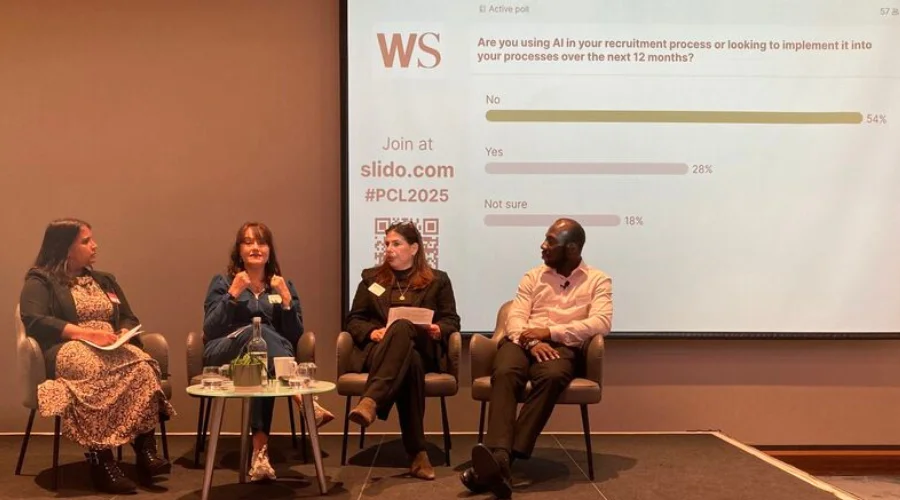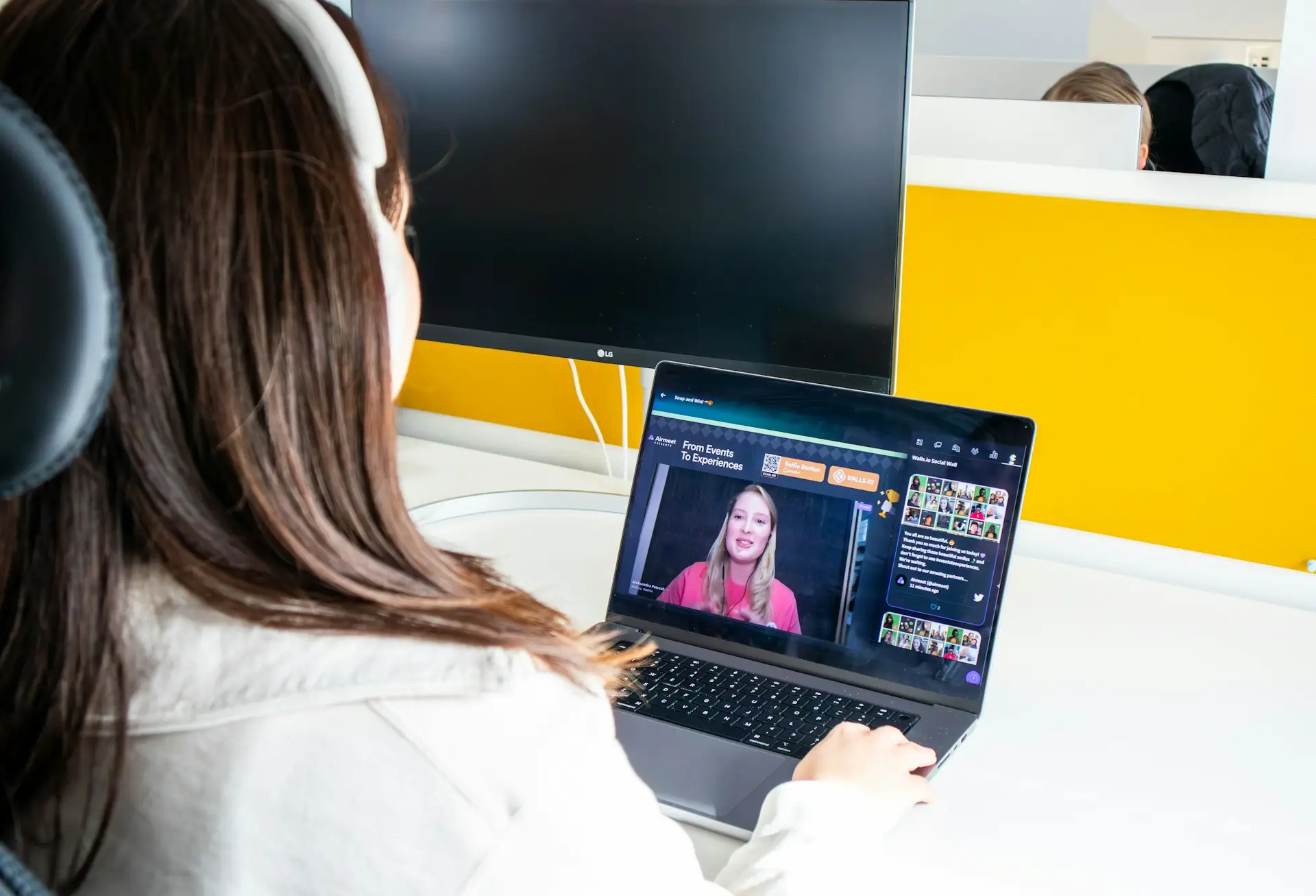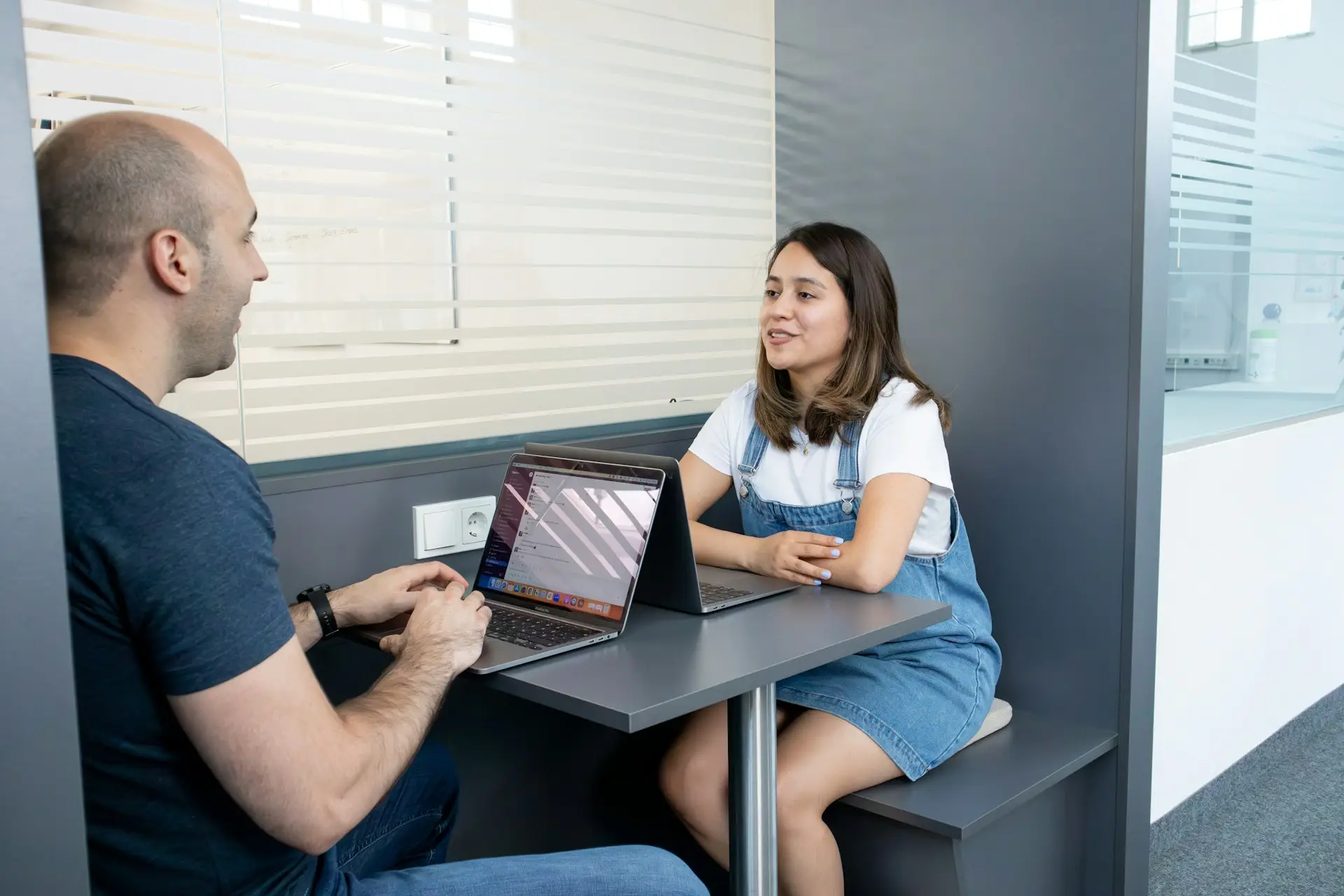
Quick CV Dropoff
Want to hear about the latest non-profit and public sector opportunities as soon as they become available? Upload your CV below and a member of our team will be in touch.

Digital interviews are now a core part of charity recruitment, especially considering how many organisations have adopted a hybrid or remote working policy. They offer flexibility, reduce costs, and make it easier to involve candidates and panels across locations. For many charities, they’ve improved access to more diverse talent and speed to hire without compromising structure.
While digital hiring brings clear benefits, it also presents new challenges. As explored in our recent AI in Recruitment guide, many organisations are now navigating the impact of AI on how candidates apply and how hiring teams respond.
It’s becoming harder to assess communication style, authenticity of skills and experience, adaptability, or real alignment with your values. With AI tools now widely used for everything from CV writing to interview prep, a confident response doesn’t always reflect real ability or suitability.
In this guide, we explore how charities can build interview processes that reveal true potential, support fair decision-making, and lead to lasting hires.
The shift to digital interviews has been one of the biggest changes in charity recruitment over the past five years. What began as a response to the pandemic is now standard practice across the sector.
However, while the format has changed, many interview processes remain unchanged. Many still rely on conversational Q&As, often without structure. These can work in person, but they reveal less when delivered virtually and we would always recommend structure to any interview, whether virtual or in person. Important cues, such as how someone works through a challenge, collaborates, or communicates in real time, can be harder to spot.
At the same time, candidates are preparing in new ways. AI tools and digital platforms are now part of how many people apply for charity jobs. These tools are not designed to deceive. For candidates with dyslexia, anxiety, or less interview experience, they can offer support and improve clarity. But they do affect how candidates present and what hiring managers see.
Common tools include:
This is already reflected in TPP’s own research. According to the 2025 AI in Recruitment report:
Despite this growing use, employers are not yet aligned in how they handle it. Only 11% of organisations are currently using AI in recruitment, and just 10% of those have a formal recruitment policy or guidelines in place.
While most organisations are not asking candidates to disclose AI use, 27% are reviewing application tone and style to look for signs. This fragmented approach reflects a broader lack of consistency across the sector and can make the application process harder to navigate for jobseekers.
In the next section, we explore the key challenges charity hiring managers face in digital environments and how to respond.

Digital tools have made it easier for candidates to prepare. AI platforms, prompt libraries, and video rehearsals help people feel more confident going into interviews. For some, especially those with less experience or added access needs, that preparation can be a real support. But it also means that responses may sound polished without showing much depth.
For example:
A candidate interviewing for a fundraising role shares a strong answer about donor engagement. They speak clearly about stewardship and communication strategies. But when asked how they would respond to a challenging donor scenario, the answer becomes vague. That shift can suggest the earlier response was rehearsed or based on external support, rather than real experience.
In charity jobs where trust, communication, and adaptability are key, moments like this matter. They offer clues about how someone thinks, not just how well they perform under pressure.
What to look out for:
These are not signs of dishonesty, but they are good reasons to rethink how interviews are shaped. With the right structure and follow-up, you can move past the script and get a clearer picture of how someone actually works or responds to particular situations or scenarios.
In charity recruitment, technical skills only go so far. Roles often call for empathy, adaptability, collaboration, and a clear connection to the organisation’s mission. But these qualities are not always easy to spot when interviews focus too much on responses that could have been rehearsed.
Even in person, that can be a challenge. But with the rise of AI tools and interview prep platforms, it becomes even harder. Candidates can now rehearse answers that sound confident and well-structured, but reveal little about how they think or relate to others.
Take a mid-level operations role. You might hear a strong answer about managing cross-team communication. But if the candidate cannot explain how they adapted their style in a real situation, it becomes difficult to know how they will work with colleagues or respond under pressure.
In 2025, this is a growing concern. Many recruiters are reporting that interviews often feel more like performances than conversations. The polish is there, but the substance is harder to uncover.
Some questions to reflect on:
These are difficult things to judge from one conversation, especially when answers are prepared in advance. That’s why more charities are using multiple-stage interviews, collaborative tasks, presentations, psychometric assessments or values-based scenarios to explore how candidates interact, think on their feet or behave and respond in the workplace
Accessibility has always been part of the recruitment conversation. But with more candidates using AI-powered tools to support their applications and interviews, the picture is changing.
Tools like Grammarly, ChatGPT, and Textio can help candidates with dyslexia, anxiety, or limited experience to prepare and communicate more clearly. That’s a good thing. They reduce barriers and support confidence. But they are not a solution on their own.
Not every candidate has equal access to tech, space, or support. Some are applying from shared homes or on older devices. Others may not be as familiar with new platforms. When one candidate uses AI to shape a polished response and another struggles to connect due to poor internet, it becomes harder to compare fairly.
The issue is not that these tools exist. It’s that they can mask uneven playing fields if interview formats don’t account for them. Charities need to consider:
Digital tools can support inclusion. But only if the rest of the process is built to see the whole picture.
How often in interviews does a candidate’s real motivation for working in the charity sector come through?
According to our latest Salary, Rewards and Retention Survey, 46% of professionals said an organisation’s mission or values were the main reason they joined. That rises to 49% when asked why they stay. Purpose is not just a benefit. It is often the reason people commit and stay long-term.
But with more candidates using AI tools to prepare, it can be harder to see what is genuine. For some, these tools improve clarity and build confidence. For others, they help shape answers that sound right but may not reflect a real connection.
Examples include:
These tools are not a problem on their own. They can be helpful, especially for those less familiar with formal interviews. However, they can also make it more difficult to tell whether a candidate truly understands or believes in your mission.
What to listen for:
Strong charity recruitment means looking beyond polished phrases. Mission alignment is about depth, not just delivery. To get there, interviews need the right structure, space, and follow-up.
Interviews should help you see who someone really is, not just how well they perform under pressure or how confident they are with verbally communicating. In a digital context, that means being more deliberate. You need structure that encourages real answers, space to see how someone works, and a process that is fair to everyone.
Here are four ways to build an interview process that gives you that.
Instead of relying on open-ended Q&As, use real examples and practical prompts. These reveal how someone approaches a challenge, not just how well they’ve rehearsed.
A small, focused task can show you how someone communicates, prioritises or solves problems. These work particularly well in roles like fundraising, communications, or operations.
Structured interviews are fairer and more reliable. When every candidate is asked the same core questions and scored using the same criteria, it helps reduce bias, guesswork and subjectivity.
Clear information, alternative formats, and preparation time can make all the difference, especially for candidates with different needs or confidence levels.
A good interview does not need to be long or complicated. It just needs to give every candidate a fair chance to show how they think, what they value and how they work with others.

Recruitment in the charity sector will always come with unique challenges. You are hiring for purpose, not just performance. That makes it even more important to look beyond confidence and polish and towards how someone will actually show up in the role.
Digital interviews are here to stay, and so are the tools candidates use to prepare. That’s not something you can always control. However, you can design an interview process that provides the insight you need. One that is fair, structured and focused on what really matters to your team and your mission.
The right approach helps you spot real ability, build stronger teams and make more confident decisions.
At TPP, we specialise in helping charities build fair and effective hiring strategies. Whether you're reviewing your interview approach or planning your next campaign, our team can help you find the right people for your charity team and build a recruitment process that works for the long term.
Get in touch to find out how we can support your next steps.